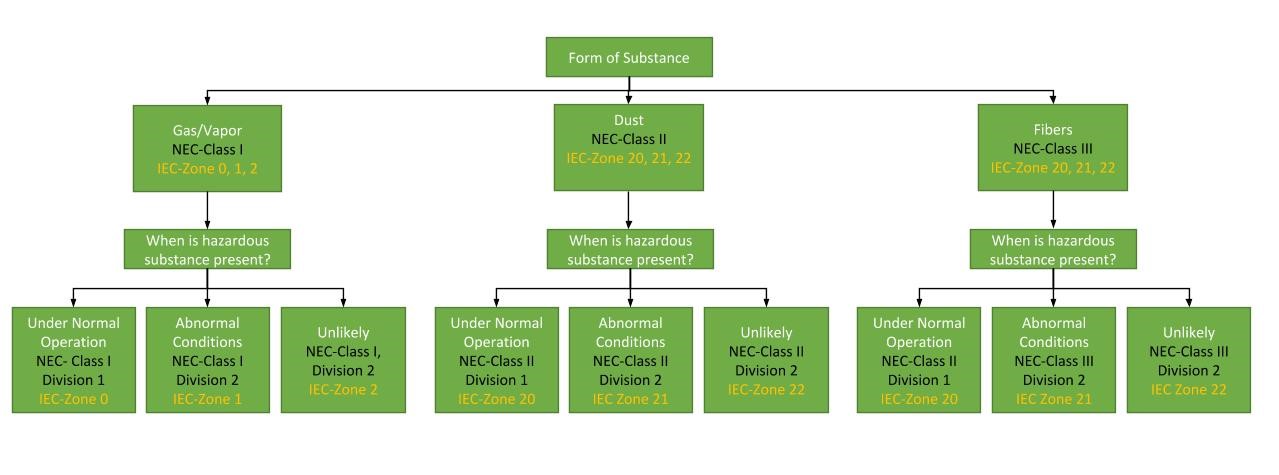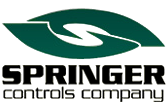When working in or specifying equipment for use in hazardous environments, we see a lot of confusion in the industry regarding the different certifications and requirements. Many people have heard terms like Class I, Division 2, Group E, or ATEX zone 21 but many of our customers only know what certification they require with little understanding of what they mean, so we thought it would be appropriate to write a blog post to help customers understand the broader implications of these terms.
This blog post will focus on the different hazardous location classifications and we’ll follow up with another that discusses how equipment can be constructed and certified for use in these environments.
What is IEC Standard vs NEC Standard?
The first thing to understand is that much like the metric vs imperial measuring systems, the United States uses its own methodology which differs from much of the world. In the United States, the most commonly followed system is the NEC (National Electric Code), while the rest of the world generally follows the IEC (International Electrotechnical Commission). This leads to a lot of the confusion in the global marketplace because certifying equipment to these different systems can be time consuming and expensive, so many companies may only certify to one or the other.
Hazardous Location Classification Guide:

Step 1: The first step in classifying the hazardous location in either system is to determine the type of hazardous substance.
In the United States, the NEC uses 3 different classifications:
- Gas/Vapor (CLASS I)
- Dust (Class II)
- Fibers (Class III)
Outside of the United States, the IEC uses two different classifications:
- Gas & Vapor (Zones 0, 1, or 2)
- Dust (Zones 20, 21, or 22)
Step 2: The next step is to determine how often the hazardous substance(s) is/are present.
In the United States, the NEC uses 2 different classifications:
- DIVISION 1 – Under normal operation/continuously/for long periods
- DIVISION 2 – Rarely or under abnormal circumstances such as a leak condition
Outside of the United States, the uses 3 different classifications:
A. Continuously or most of the time during normal operation:
>> For Gas/Vapor this would be Zone 0. | For Gas/Vapor this would be Zone 0.
B. Rarely under normal operation:
>> For Gas Vapor this would be Zone 1. | For Dust this would be Zone 21.
C. Not likely under normal operation (leak condition):
>> For Gas/Vapor this would be Zone 2. | For Dust this would be Zone 22.
Step 3: Groups then define the hazardous material in more detail.
Under the NEC system used in the United States the groups are:
- Group A – Acetylene
- Group B – Hydrogen
- Group C – Ethylene
- Group D – Propane
- Group E – Metal dusts (eg. Magnesium, Aluminum, Titanium etc.)
- Group F – Carbon-based (eg. coal and charcoal)
- Group G – Nonconductive dusts (eg. Flour, wood/sawdust, plastic dust)
Internationally the IEC assigns groups as follows:
Gas:
- IIC – Acetylene & Hydrogen
- IIB+H2 – Hydrogen
- IIB – Ethylene
- IIA – Propane
Solids:
- IIC – Conductive dusts (eg. Magnesium, Titanium)
- IIB – Nonconductive dusts (eg. Flour, wood/sawdust, plastic dust)
- IIA – Fibers (eg. Cotton, rayon etc.)
The examples below are to help further understanding:
Example 1: An open coal conveyor belt with airborne coal dust continuously present.
>> NEC: Class II, Division 1, Group F. | IEC: Zone 20, Group IIC.
Example 2: A propane tank filling station.
>> NEC: Class I, Division 2, Group D. | IEC: Zone 2, Group II.

